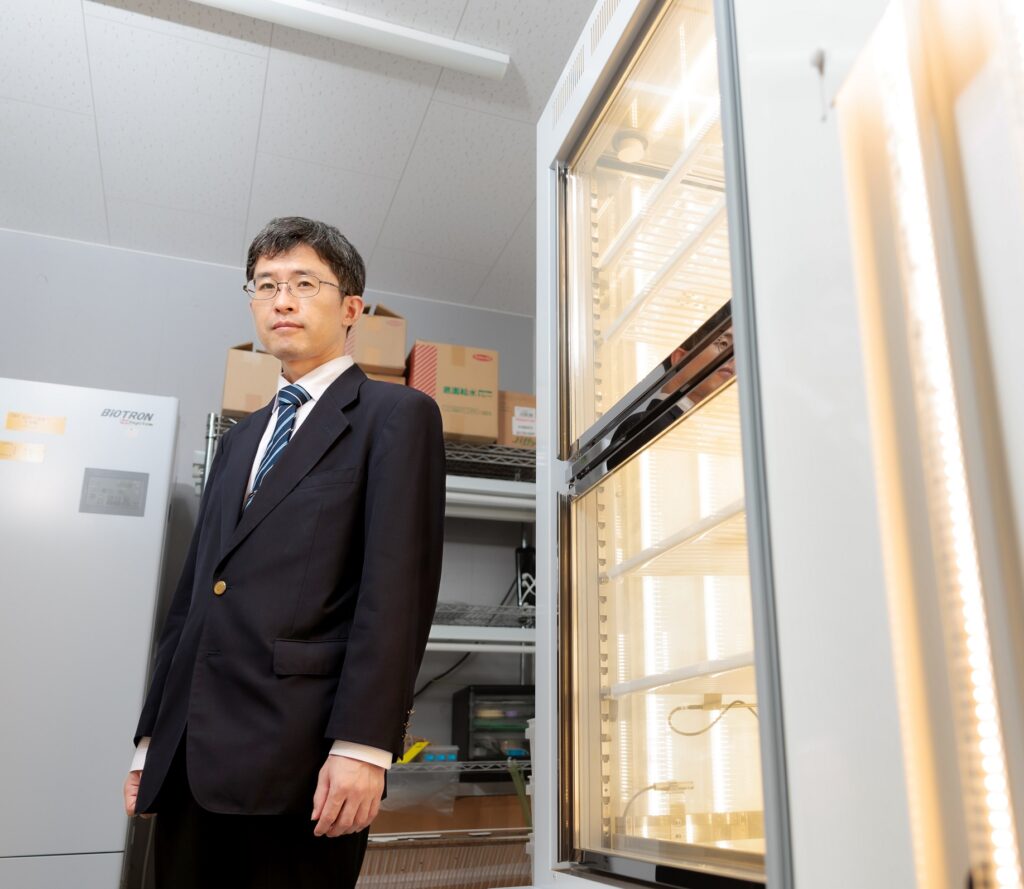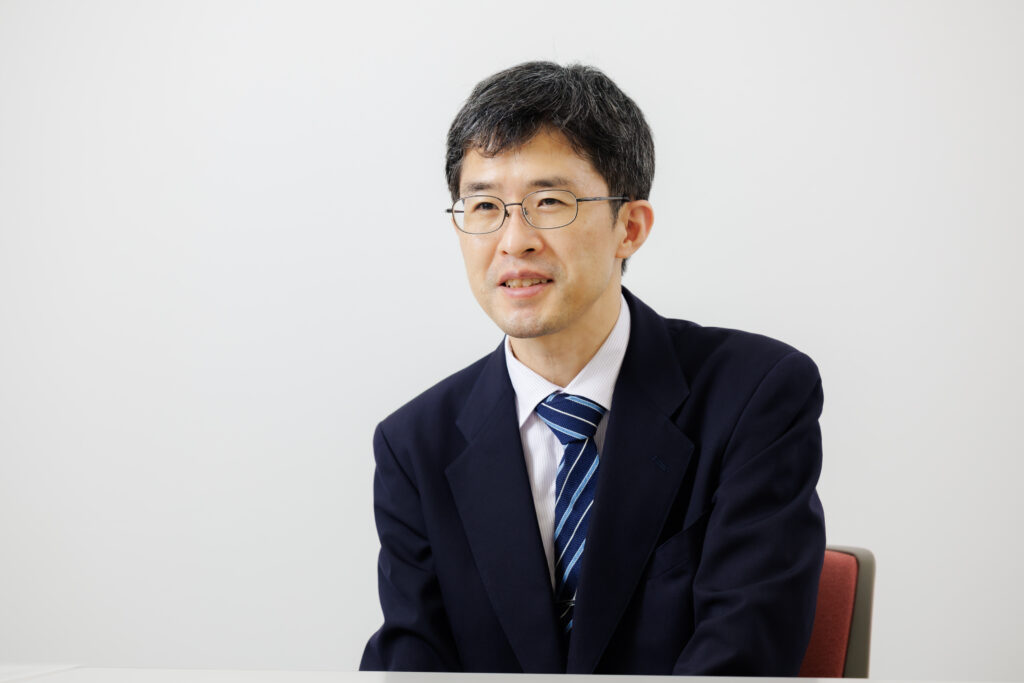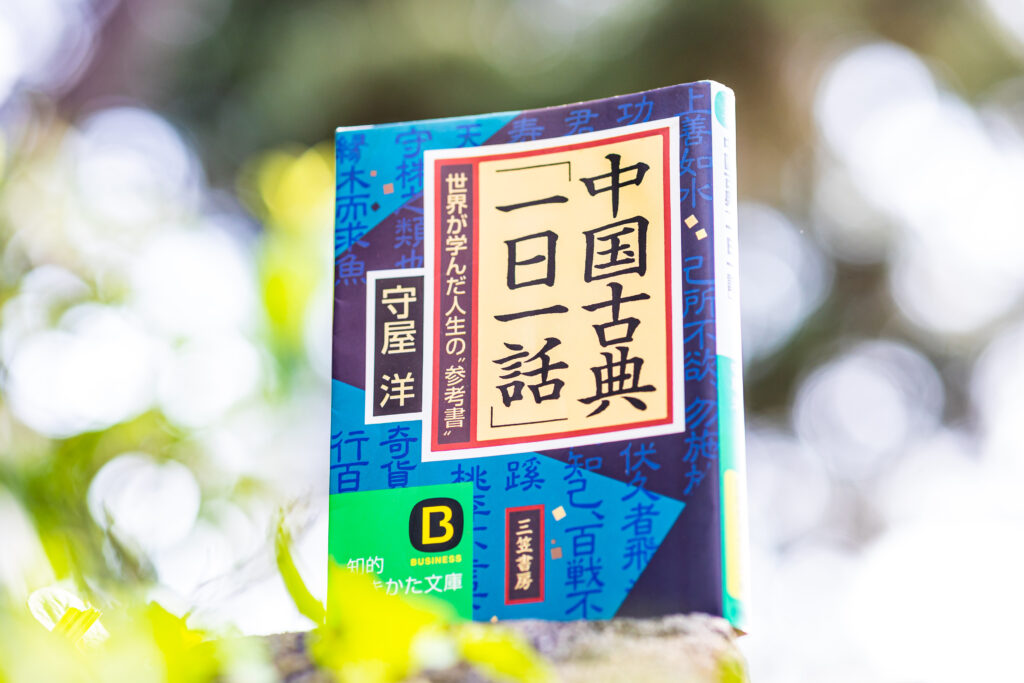
Professor Makoto Fujiwara of the Faculty of Science and Technology, a specialist in botany, realized while analyzing gene functions and microscope observations that the regulation chloroplasts are formed and proliferate varies by plant tissue. He explores the subtle system plants use to control chloroplasts.
Chloroplasts produce oxygen and nutrients from water and carbon dioxide through photosynthesis. Observing plants through a microscope, we can see how there are between dozens and hundreds of chloroplasts per cell. For many years, I have been captivated by the beauty of their uniform and spherical shapes.
Chloroplasts exist in the mesophyll cells between the epidermis on the front and back of the leaf and the guard cells that make up the epidermal pores. Our recent research has shown that the formation and proliferation of the chloroplasts in the mesophyll cells and guard cells are not controlled uniformly.
Focusing on the mechanism for backing up even when issues occur during chloroplast proliferation

It is thought that chloroplasts in eukaryotic cells originated from a symbiotic event with the ancestors of the cyanobacteria that carry out oxygen-generating photosynthesis. In fact, chloroplasts have their own genetic information, and divide and proliferate themselves at a pace that can keep up with plant cell division.
If the genes related to chloroplast division are disrupted, that chloroplast will obviously have issues with proliferation. In a mesophyll cell where that happens, the number of chloroplasts will reduce in line with the importance of the genes.
Interestingly, even if the most important genes are disrupted in plants, the leaf will develop almost normally, and there will be a minimum of at least one chloroplast within that mesophyll cell. Something even stranger is the appearance in the guard cells that have lost their chloroplasts, but even here there are always “chloroplasts” (though they are not classified as such) that have lost their photosynthesis ability, and in some cells, these proliferate even more than normal chloroplasts.
We are forced to assume that there is some mechanism of chloroplast inheritance that works in conjunction with the formation of the guard cells. We don’t know the details yet, but it appears to be a sort of fail-safe system, or in other words, a way to distribute chloroplasts so that there is at least one in each mesophyll cell and guard cell even if something happens with the division process.
Strictly speaking, chloroplasts belong to the family of organelles known as plastids, which also includes colorless leucoplasts (and amyloplasts that store starch) found in roots and seeds; and chromoplasts that store orange, yellow, and red pigments seen in flowers and fruit. It is thought that the ancestors of cyanobacteria, which primarily carried out photosynthesis, developed diverse functions during plant evolution, giving rise to a variety of plastids.
From previous research, we have learned that chloroplasts, amyloplasts, chromoplasts and other plastids exist to match the plant functions, and they are differentially controlled by tissues. Our research has shown a part of how chloroplasts, which are distributed in mesophyll and guard cells, undergo differential regulation even within a single leaf.
Hone observation skills with microscopes, learn from plants
Our lab wants to shed light on the mysteries of chloroplasts by honing microscope observation skills, building on the knowledge of plant gene functions. Our goal is to accurately track the phenomena taking place within a plant’s life cycle using living tissue.
The phenomena you see peering into a microscope are actually there. We find the pleasure of our research when we can obtain that sort of solid response. The motto of our lab is “Learn from plants”. Because there is the sense that when we are absorbed in an experiment, the plant will suddenly speak to us, although this does not happen all the time.
The book I recommend
“Chugoku Koten ‘Ichinichi Ichiwa’ Sekai ga Mananda Jinsei no ‘Sankosho’”(The Chinese Classics ‘One Tale a Day’: Reference books for life the world learned from)
by Hiroshi Moriya, Mikasa Shobo

This was the text for a published lecture I attended once. It introduces aphorisms from the Chinese Classics, such as the Analects, the Caigentan, and the Shenyinyu. Normally, we focus on literature or research presentations produced in English. I feel that the occasional exposure to the Chinese classics helps keep my head and mind in balance.
-
Makoto Fujiwara
- Professor
Department of Materials and Life Sciences
Faculty of Science and Technology
- Professor
-
Graduated from the Department of Agricultural Chemistry, Faculty of Agriculture, the University of Tokyo, and received his M.S. and Ph. D. in Agricultural Science from the university’s graduate school. Appointed to his current position in 2021.
- Department of Materials and Life Sciences
Interviewed: July 2022